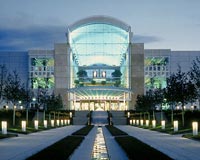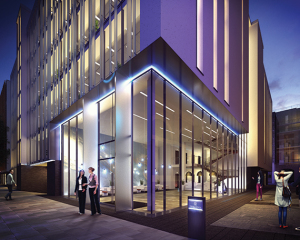Bristol’s Broadmead retail heartland suffered a double whammy when the recession hit. In 2008, as the economy was reeling, the 1m sq ft Cabot Circus shopping centre opened its doors and threatened the future of the city’s original shopping pitch.
Richard Bashford of Fawcett Mead says: “Retailers thought west Broadmead, the opposite end to Cabot Circus, would die. In mid-2005 Silverscreen took a lease on 74- 76 Broadmead at a then-record rent of £183.50 per sq ft zone A. There wasn’t another open market letting in this pitch until January 2013.”
Zone A rents have almost halved to £95 per sq ft since 2005. Yet 2014 finally saw Broadmead start to recover and establish a consistent, if comparatively low, rental tone.
Recent deals to the likes of Poundland and Cycle Surgery have helped to give the area a new lease of life. “Momentum is picking up,” says Bashford. “That end of Broadmead enjoys good pedestrian flow from Bristol’s office core and new residential development.”
Heading east along Broadmead, voids have been fewer as retailers have clustered around Cabot Circus, which is also starting to fulfil its potential.
Peter Cooper, director at Cabot’s joint owner Hammerson, says: “There is now greater stability and we’re seeing a definite upturn in retailer interest.”
Last year’s arrivals included Vans and Pull & Bear. In May this year, the attraction of Cabot’s high-end fashion quarter, Quakers Friars, was boosted by a 5,000 sq ft letting to Michael Kors.
Zone A rents are at a relatively low £165 per sq ft and Cooper says: “Without further competition there is potential to surpass £200 per sq ft.”
Looming large
Yet, further competition is precisely what is on the horizon. Just seven miles north of Bristol city centre, the region’s biggest out-of-town shopping centre, Cribbs Causeway, has plans for a 350,000 sq ft retail extension.
Plans have been submitted to not only enlarge the 700,000 sq ft mall’s retail offer, but add around 90,000 sq ft for restaurants and cafés.
Philip Vaughan, development director at the mall’s joint owner M&G, says: “We have strong demand from both new retailers and existing occupiers who want to expand.”
He adds: “We would like to begin construction in 2017, to open in 2020 or 2021.”
First the scheme needs to secure planning. Around 5,700 homes are to be built around the site of the nearby former Filton Airfield in the coming years and Vaughan is hopeful that the extension will be seen as the heart of a growing urban centre.
Others, however, including Bristol city council and Cabot Circus, are already out in opposition, arguing that planners must adopt a city centre first policy.
Braced for impact
Even if the extension gets the go-ahead, most agents and market analysts believe that it will not have the devastating impact many fear.
Boosted by the appeal of free parking, Cribbs has a catchment population of 5m, appealing to shoppers not only across the South West, but as far as Swindon and Wales.
“Bristol is still the strongest retail centre in the region and ranks 13th in the UK, compared to Cribbs’ position at 41,” says James Miller of Experian Marketing Service.
He adds: “It would be illogical to argue the extension would have no impact, but we view the two centres as very different beasts, with Bristol serving its densely populated catchment well and Cribbs largely taking spend from the edges. Cribbs might nudge up a couple of places, but Bristol certainly won’t slip down the list.”
A 120,000 sq ft extension anchor store is proposed for Cribbs and Miller questions how well it would fair in securing a department store draw.
Given the dominance of Cribbs’ John Lewis store and the fact that House of Fraser is already established at Cabot Circus, it may be short on options. Agents predict the anchor will either be Primark or an upsized existing store. In either case, it is unlikely to have the kudos required to draw significant spend from the city centre.
“A lot of retailers will continue treating the two as different markets and choose to have a store in each”, says JLL’s Craig Cawthorne.
He argues that Broadmead’s priority is to continue evolving, while Cabot must build on the strength of its leisure offer and persuade affluent shoppers that it is able to meet their needs.
“Cabot has a strong base to build on,” says Cawthorne. “As times become more prosperous it is hoped that will pay off.”
On the waterfront
Until now, Bristol has failed to capitalise on the opportunities for waterfront dining, but a series of new, mixed-use developments, are exploiting restaurateur demand.
By spring 2016, more than 10 restaurants could open at the heart of three mixed-use waterfront schemes.
“So far Bristol’s waterfront leisure has been wet-led, but that is set to change,” says James Woodard, associate director at Sanderson Weatherall. “There is a lot of demand both from local independents and operators looking to expand out of London.”
To the south of the city centre, developer Umberslade is developing Wapping Wharf, a mixed-use scheme incorporating 600 homes. Around three of its ground floor units will be allocated to restaurants and available for occupation from the summer.
At the same time, the first couple of restaurant units will become available at City & County’s mixed-use scheme, The General, while February 2016 will see the opening of around five restaurants at Cubex’s Finzels Reach, another waterside project on the site of the former Courage Brewery.
In a city staunchly supportive of local independent restaurants, it remains to be seen how well they will be represented in the new waterfront developments.
Fleurets’ Kevin Conibear says: “Rents have to be affordable, but I think landlords will take a realistic view. They recognise the value of independent operators and how the right occupier mix can add to the value of their scheme.”













